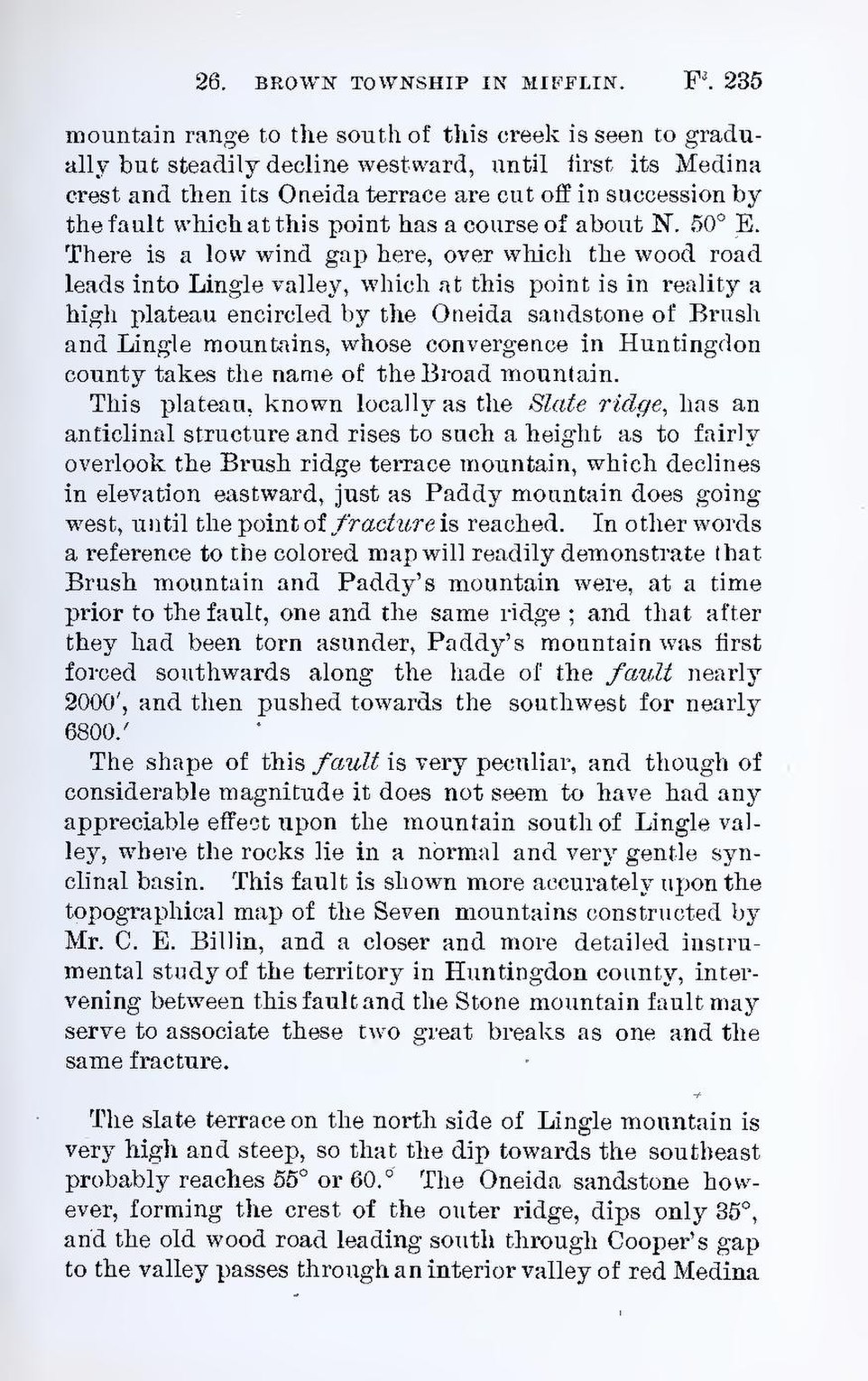mountain range to the south of this creek is seen to gradually but steadily decline westward, until first its Medina crest and then its Oneida terrace are cut off in succession by the fault which at this point has a course of about N. 50° E. There is a low wind gap here, over which the wood road leads into Lingle valley, which at this point is in reality a high plateau encircled by the Oneida sandstone of Brush and Lingle mountains, whose convergence in Huntingdon county takes the name of the Broad mountain.
This plateau, known locally as the Slate ridge, has an anticlinal structure and rises to such a height as to fairly overlook the Brush ridge terrace mountain, which declines in elevation eastward, just as Paddy mountain does going west, until the point of fracture is reached. In other words a reference to the colored map will readily demonstrate that Brush mountain and Paddy’s mountain were, at a time prior to the fault, one and the same ridge; and that after they had been torn asunder, Paddy’s mountain was first forced southwards along the hade of the fault nearly 2000′, and then pushed towards the southwest for nearly 6800.′
The shape of this fault is very peculiar, and though of considerable magnitude it does not seem to have had any appreciable effect upon the mountain south of Lingle valley, where the rocks lie in a normal and very gentle synclinal basin. This fault is shown more accurately upon the topographical map of the Seven mountains constructed by Mr. C. E. Billin, and a closer and more detailed instrumental study of the territory in Huntingdon county, intervening between this fault and the Stone mountain fault may serve to associate these two great breaks as one and the same fracture.
The slate terrace on the north side of Lingle mountain is very high and steep, so that the dip towards the southeast probably reaches 55° or 60.° The Oneida sandstone however, forming the crest of the outer ridge, dips only 35°, and the old wood road leading south through Cooper’s gap to the valley passes through an interior valley of red Medina
